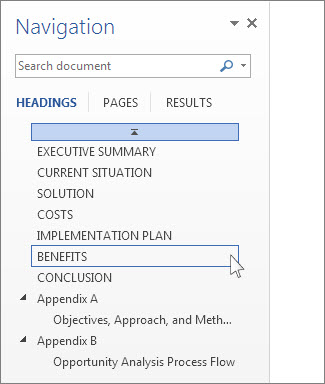

The following macro, DeleteUnusedStyles, does just that. If it isn't, then the style can be easily deleted. It can quickly search through a document to see if a particular style is used anywhere. You may want to get rid of these styles, but this can be dangerous to the format of your document if you start deleting them without knowing that they really are not in use. Visit my website at Click here to join my mailing list now for updates and bonus material.When you work with a document for a long time, or when you inherit a document from someone else, it is very possible that it contains styles that are no longer in use. Let me know if it was in the comments below, and keep writing! I hope this brief ‘how to’ post has been useful to you. Clicking on the arrow will make all but the last paragraph of the text associated with that Heading visible or non-visible by ‘opening’ or ‘closing’ the Heading to show or hide it.You may have noticed a small, grey arrow to the left of your title when you use the Heading option.It isn’t necessary to go to all that bother if you don’t need to.You can also choose to add the change to the Style gallery or make the change only for the document you are working on.Use the pull down menu to change the font, font size, colour etc.If you want to change the style of the Heading, you can click on a particular Heading option and then right click and choose Modify from the dialogue box.BONUS INFORMATION Changing the STYLE of a Heading Congratulations, you have now successfully moved an entire story, chapter or section of your work to a new location within your Word document.


All of the data appearing under a Heading is tied to that Heading and will move with it en bloc.If it does not, make sure you have the option for HEADINGS chosen under the Navigation Pane search bar rather than PAGES or RESULTS. Once you have typed out your Heading, it should appear on the Navigation Pane. You can change the font as you normally would by using the drop down Font menu in the Home tab. The Heading font type may automatically be in the program default (e.g.I tend to use Heading 1 for either chapter titles or short story titles, but if I was writing a non-fiction, I’d use Heading 1 for chapter titles and then Heading 2 for section titles. For this example I used my short story The Trunk. For each chapter, short story in a collection, or section header in a non-fiction work, choose an appropriate Heading Style and type out the title.To populate the Navigation Pane, you will need to use the Styles settings under the Home tab. This will open up the pane on the left hand side of the screen.Click on the View tab and put a tick in the box Navigation Pane.Open the Navigation Pane so you can see what you are doing.
HOW TO USE BUILT IN HEADING STYLES IN WORD NAVIGATION PANE HOW TO
If you don’t know how to move things around easily in Word, I thought this brief rundown on using Headings and the Navigation Pane might help. But after I have put everything together I prefer to move my work to Word for editing, rearranging, and formatting. I do use Scrivener, it is great when I’m researching and writing a first draft as I can easily see all my notes, research, images, character lists, timeline etc. I’m a member of an online writing group and people are often startled when I say I move whole chapters or stories around in Word similar to the way you can in Scrivener.


 0 kommentar(er)
0 kommentar(er)
